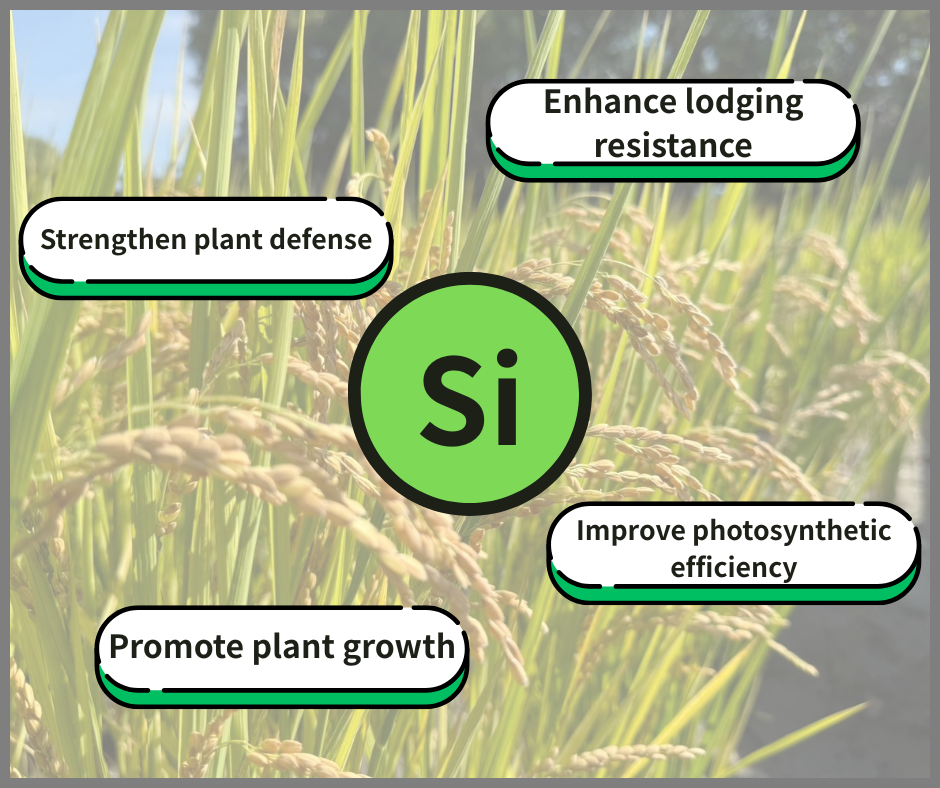FAQ
Rice (Oryza sativa L.) is a monocotyledonous plant in the Poaceae family. It thrives in warm and rainy climates. Taiwan, located in the tropical and subtropical zones, has abundant rainfall and high temperatures, making it an ideal environment for rice cultivation. In Taiwan, rice can be grown in two cropping seasons per year, making it the crop with the largest cultivated area and the highest number of farmers. It is Taiwan's most important agricultural crop.
Silicon (Si) is an essential mineral nutrient for plant growth and development and plays a vital role in plant physiology. Applying silicon fertilizers can promote the formation of a double silica layer in the epidermal tissues of rice, significantly enhancing its resistance to lodging. During the growth of rice, silicon can also reduce the leaf angle, allowing leaves to stand more upright and thereby improve photosynthetic efficiency. In addition, silicon may form complexes with organic compounds in the epidermal cell walls, increasing resistance to enzymatic degradation.
Based on these characteristics, applying silicon fertilizers offers several benefits for rice:
- Enhanced lodging resistance: The double silica layer strengthens the plant structure, making rice stalks more upright and sturdy.
- Improved photosynthetic efficiency: Adjusted leaf angles allow better light penetration, enhancing nutrient synthesis.
- Stronger defense against pests and diseases: Silicon forms a protective layer in the cell wall, improving resistance to pathogens and enzymatic degradation.
- Healthier plant growth: Silicon improves physiological functions, helping increase both yield and grain quality.

These positive effects demonstrate the potential of silicon fertilizers in rice cultivation management and contribute to improving the overall performance of rice production in Taiwan.
Back
